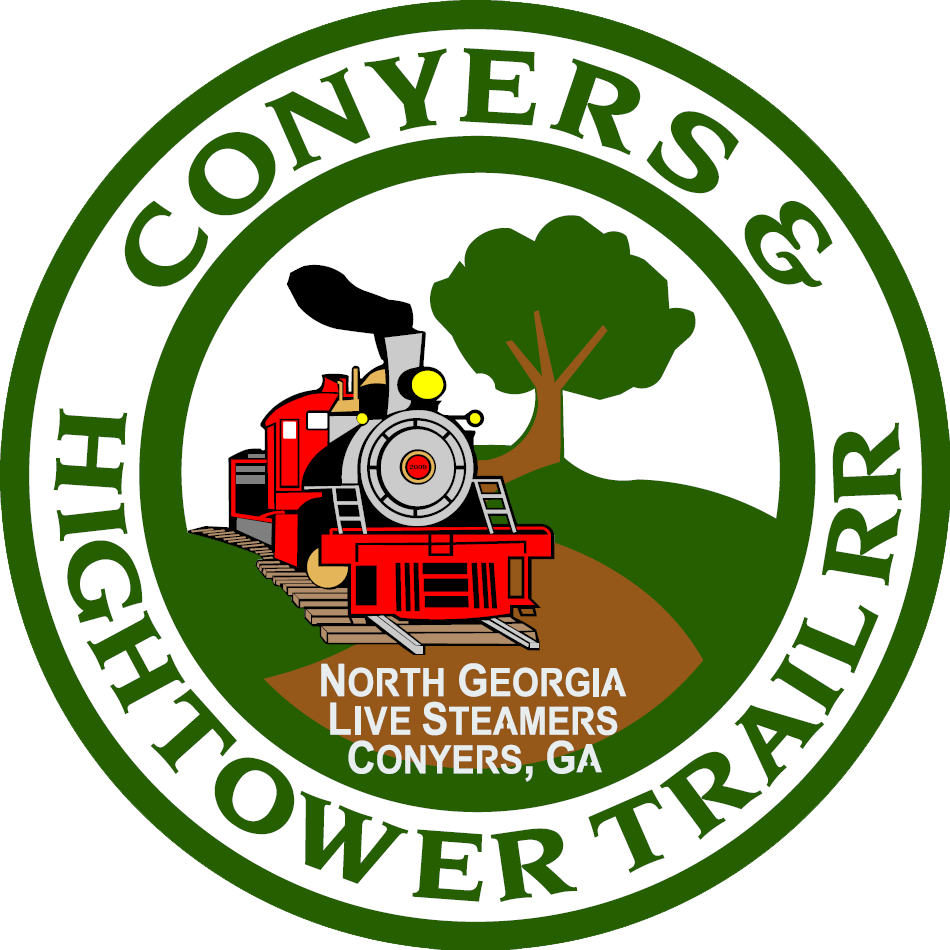
LIVE STEAM HOBBY
Live Steam Hobby Information
Introduction to 7-1/2" Railroading
The Equipment
Our trains are scaled to one-eighth the size of the full-size railroads. This means our track is gauged at 7-1/2" between the two rails. Most of the equipment is built to a 1.5" or 1.6" per foot scale. The engines can weight anywhere for 100 to 2500 pounds depending on the model and type and can pull from one to fifty+ people. All ages ride our trains, from little kids to adult kids, 18 months to 93 years young. The rolling stock cars range from 4' to 11' in length and weight from 85 to 400 pounds each.
The Locomotives
There are three type of engines: Electric, Gas Engine Powered, and Live Steam.
The electric engine uses 12- or 24-volt storage batteries to power one or two electric motors on each drive truck. These locomotives are very quiet and quite efficient with today's modern sophisticated controllers. They are very easy to run by engineers of all ages and require very little maintenance.
The gas engine powered locomotives drive a hydrostatic pump to operate the hydraulic motors mounted on each of the drive trucks. The gas engines used range from a 5HP single cylinder type up to 18HP or more multi-cylinder models. Some are even powered by multi-cylinder diesel engines. These types of engines are also very easy to operate although they do require a little more maintenance due to the more complex mechanisms. These locomotives also tend to be bit larger again due to the number of devices that must be housed inside the locomotive.
The live steam locomotives in almost all cases operate just like the real locomotives used in the past and still today. Although these locomotives are more complex and require a little more training to operate, they offer the highest degree of realism when compared to their prototypical counterparts (the real locomotives!) Several types of fuel can be used to fire our models. Many burn coal or diesel fuel (fuel oil) like many prototypes originally did. Wood can also be used is an easy supply is available. Another type of fuel being used more often today is LP Gas due to its availability and cleanliness. When used properly with proper safety precautions, all these types of fuel are safe and fun to use. Regardless of the fuel type, the fuel is used to heat the water and make steam. The steamers run on steam pressures ranging from 85 to as much as 145 PSI (pounds per square inch) in their boilers. The resulting steam is sent through steam lines to the cylinders and used to drive pistons connected to the main drive wheels. The model shown at the right is an example of one type of valve gear and shows how the steam is used to control and operate the "power plant" of a steam locomotive. The steam powered locomotives are quite powerful and sound just like the real full-size steam engines.
Most live steam locomotives are of a type called "rod locomotives". This type is the very familiar type with long rods connecting the driver wheels together to provide the power and traction to propel the locomotive. This type of locomotive was the most common and is the type seen in old western movies.
In addition to rod locomotives, another type was built and used primarily in logging and mining operations. This type of locomotive is called a "gear driven" locomotive. There were three main types of these built; the Shay, Heisler, and Climax.
This type consisted of gears attached to each driver set of wheels with all drivers connected by a long drive shaft. On a Shay, the driveshaft runs on the outside of the drive wheels on the right side. For the other two types, the driveshaft runs down the center of the locomotive between the drive wheels.
The Clubs & Private Tracks
There are many clubs located throughout the United States and Canada. In addition, many countries around the world have clubs or organizations with large scale model railroads ranging from Gauge One, 3-1/2", 4-3/4", 5", 7-1/4", 7-1/2", 12", 18", and even 24”-gauge tracks. Live Steam Magazine is a good reference source for more information on clubs and tracks in your area.
How to Get Equipment & the Costs
Like in any hobby, there are many options when it comes to equipment. Your abilities as well as a willingness to do part or most of the work in machining and assembling the equipment can greatly influence the costs involved. For almost all types of equipment, vendors can supply the equipment in rough casting form (you machine the parts yourself), partially machined form, ready to assemble form, or in a completed ready-to-run (RTR) form.
For an electric and gasoline engine powered locomotive, costs can range from as little as $800 up to $70,000 depending on the size, options, and delivery form. Used (previously owned) steam powered locomotives can range from $8,000 to $145,000. New steam locomotive starter kits range from $4,600 upwards to $80,000 plus the cost of machining the parts.
As mentioned, many vendors provide assistance in the machining of the parts with some even providing fully machined parts. So, depending your machining skills (or willingness to learn the necessary skills), available time, and how much you want to spend, the costs can vary quite a bit. With a little ingenuity and time investment, it is possible to have a working locomotive that you and your family can enjoy for many years for relatively little money. Contacting a local club or hobbyist is a great way to see how to get started.
